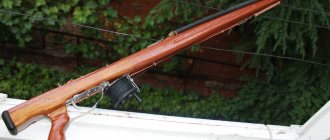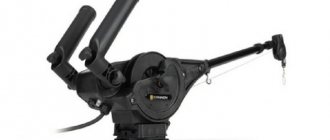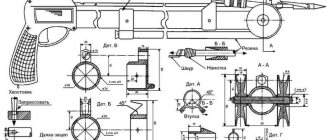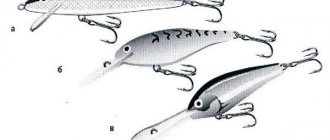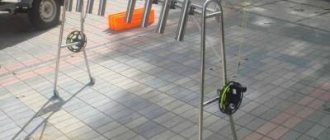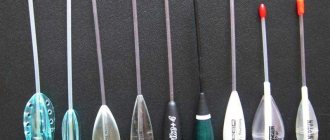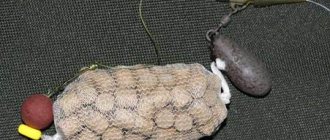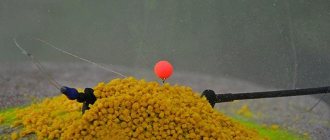Surely many fishermen know what a downrigger is and have fished with it more than once. But some only had to see it from other anglers, or in various video programs about fishing. But not everyone came up with the idea of making a downrigger with their own hands. But, let’s first figure out why this “miracle of technology” is needed at all.
A downrigger is primarily designed for fishing at a predetermined depth.
Fish with this accessory only from a boat. The essence of the device is simple - you set the desired fishing depth and, thanks to the downrigger, you can move the bait on it, regardless of the working depth of the bait.
It’s easy to guess that such a device is made and used in deep water bodies
such as reservoirs, seas and deep-sea lakes.
And it is used preferably for catching deep fish
- pike perch, catfish and other inhabitants of the depths.
Meet the Downrigger
And so now let’s look at what a downrigger consists of and the principle of its operation.
Downrigger composition. In the classic version, it includes the following components: a cable or cord, a reel, an arrow with a spinning rod holder, a weight, a clip with a fishing line holder, and an attachment system to the boat. You can get acquainted with its functionality in more detail and clearly by watching the video clip.
More advanced models already come with an electric winch, echo sounder, and a cable lowering counter.
How does a downrigger work?
This device includes 5 main components. For example:
- Coil.
- Special device for fastening.
- Cargo.
- Clips.
- Rod holder.
If the device is equipped with a cord rewind counter, then it will be a more modern device that allows you to control the fishing depth. In addition, you can mount an electric drive on it, which will speed up the operations of raising and lowering the equipment into the water column. The operating principle of the device is as follows:
- First, the device must be secured. Fastening is carried out using a special clip. If the device is not secured correctly, it will not work properly. In addition, a device that is not securely fastened may fall into the water.
- After this, the tackle is lowered into the water to the required depth. A sinker and a spoon will help you do this; you just have to wait a while until the fish swallows the bait.
Before this, you need to determine the depth at which the fish is located. In this case, it is better to use an echo sounder.
How to make a weight for a downrigger with your own hands
I would like to separately specify the shape of the cargo. The downrigger is just gaining momentum in Russia, but in the Scandinavian countries it has been used for a long time and during its use, fishermen managed to make their own adjustments to the shape of the load. So, over the years of operation, three almost ideal shapes were developed: an oval, an ellipse, and also a round shape into which a kind of feather fin is inserted.
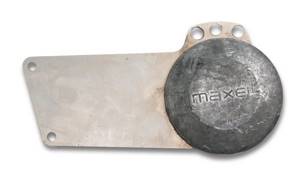
When making homemade products, it is worth considering that there are restrictions on the weight of the load: 500 grams for every five meters of bait depth. That is, for comfortable fishing at a depth of 10 meters, we use a load of 1 kg.
Making such a load yourself is very simple: just take a small piece of clay, make a semicircular depression in it and fill it with hot molten lead. After it has cooled, take it out and sand it a little to remove any unevenness. Then make another half identical to the first. The two halves can be connected to each other with bolts after making holes in the load.
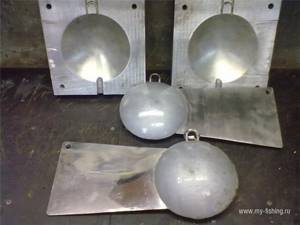
It is advisable to recess the bolt heads in the load so you will avoid unwanted snags when wiring. Insert the rudder feather between the halves. This will give additional durability to the bait when casting it at depth. But that’s not all, you still need to make several holes in the load for attaching the main cable, for attaching the cord with a clip, and for attaching additional weights. After collecting it, you need to paint it in the color of the bottom of the reservoir on which you will fish.
Photos of downriggers
Note!
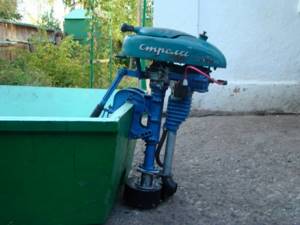
Do-it-yourself boat motor - tips for beginners, projects, drawings and step-by-step description of the construction of the main components and elements (video + 120 photos)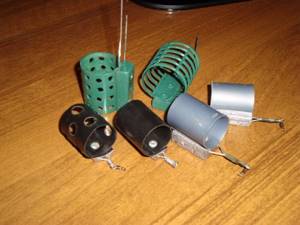
Feeder for winter fishing - secrets of use and techniques for feeding fish in winter (115 photos)
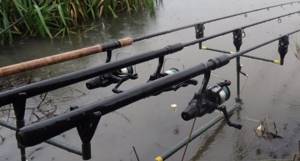
Bottom gear - the most effective types of equipment and features of casting techniques (95 photos and videos)
Help the project, share on social networks 

1+
Making a clothespin clip for the downrigger
Now let's move on to another component of our masterpiece - the clip. The clip holds the line and helps set the depth of the bait's working area. It also helps ensure that our bait stands in front of the load and does not get tangled on the main cable.

Clips are divided according to the type of fastening. There are those that are attached to the torso, and there are those that are attached to the load.
When making a clip, you should take into account several parameters, such as the force with which the clip will hold the fishing line and the tension force when opening the clip. Your catch often depends on these parameters. Understanding how to properly clamp a clip will come with experience.
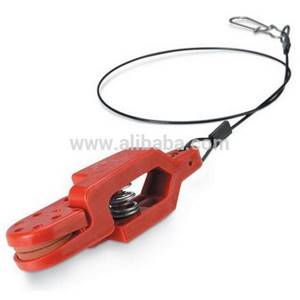
Finding such a clip in stores is still problematic. Since this type of fishing equipment has just begun to gain popularity in Russia. In general, the purpose of the clip is to release the line in time for a bite.
What is a downrigger
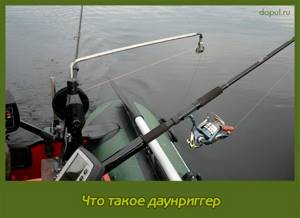
The biggest advantage of a downrigger is that it allows you to easily fish at great depths with virtually any spinning bait. We, for example, love to fish on the track, and much more often we use wobblers, which dive to a certain depth. With a downrigger it is possible to use virtually any spinning bait, and this is the main difference between a downrigger. In addition, it allows us to very clearly track the depth at which we are fishing. If we fish with a wobbler by simple trolling, without a downrigger, then the diving depth of the wobbler depends on what kind of wobbler it is, what working depth it can reach, and on the thickness of the fishing line and on the speed of the retrieve. But, in principle, the speed of the retrieve is not so important; the most important thing is the depth and thickness of the diving line of the wobbler. If we use a narrower braid, we fish, for example, at 5 m, and put a thicker one, and the wobbler goes a little higher. So, it is quite difficult to clearly control the depth with a wobbler. If the wobbler does not touch the bottom, then this is virtually impossible to do. But the downrigger makes it easy to track this, due to the fact that it has a counter by which we see to what depth we lower the load.
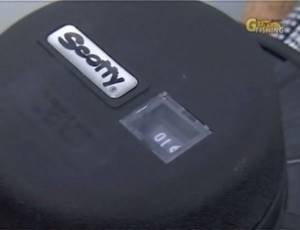
Rice. 45-1 Following the load there is a special clip; a fishing line is attached to this clip, and the bait is attached to the fishing line. As we have already reported, any bait is possible - a rotating spoon, a silicone bait (twister, large vibrotail), oscillating spoons. It must be stated that with a downrigger, oscillating spoons show excellent results, due to the fact that this is a catchy bait, especially for pike, but it is unrealistic to drive it to great depths. And with a downrigger this is very easy to do. The downrigger allows you to fish different water levels. If we fish with a wobbler in the summer, along the thermocline, we can set a certain depth and go at this depth; we can’t go deeper or higher. We see from the echo sounder that the fish is standing at a depth of 6 m. Knowing what length of release we need to make with a wobbler, and knowing that a wobbler of such and such a model, if released at 20 m, will dive to 6 m, we can do this Maybe. But it may turn out that the fish is standing at 8 m, 10 m, 3 m. What then to do, how to find out this depth? It's complicated. And with a downrigger this is very easy to do. In addition, we can normally place a miniature spinner to a depth of 4-5 m, and the bait will remain there throughout the retrieve. Based on this, a downrigger, if used correctly, brings very excellent results. It allows you to delicately capture any layer.
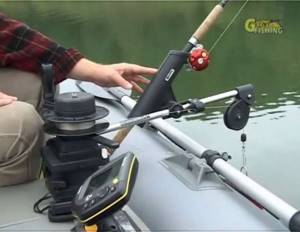
Rice. 45-2 To properly fish with a downrigger, you need the following equipment. Firstly, this is the boat, and secondly, the downrigger itself (Fig. 45-2). A downrigger must have a holder for a spinning rod. It is possible to place a couple of spinning rods on the downrigger. In most cases, installing a pair of spinning rods on one downrigger is most profitable for sea fishing or on large lakes where there are salmon, and where you need to fish different horizons at the same time. We place one bait on the bottom clip, which is attached directly to the downrigger weight, and then directly on the cable, three or four meters away, or in another arbitrary place, we install a second clip, and to it we attach a second bait, which goes at a different depth. Based on this, with one downrigger it is possible to fish with two spinning rods at once. But, as we have already reported, if the depth is shallow, up to 15 m, it is more profitable to use one bait. When fishing with one bait, it is easier to quickly change the fishing horizon. We are swimming, we see that the rise has begun, we took the downrigger, reeled it a little higher, and at that very moment we reeled in the fishing rods. If we have two spinning rods, this is much more difficult to do. With two spinning rods, as we have already reported, it is very comfortable to fish in huge bodies of water, when sea fishing, at a time when the bottom is at an enormous depth, we fish specifically in the water column, and we have infrequent bites. If frequent bites follow, it is better to find out the specific depth and use domestic baits at this depth. Canadian downriggers from SCOTTY are very good, as they have a smart system for releasing the line and weight. We have a lever that acts as a friction brake on the reel: it can be easily released and it will spin slowly. Let us remind you that the downrigger can also be used with one hand, not necessarily with two. We can lower the weight - stop, lower - stop, this is done quite easily with one hand due to the system that slows down the downrigger drum.

Rice. 45-3 The downrigger's arrow needs to be strong. There are models of downriggers that are designed for fishing with small weights; they have very fragile arrows that can break. But for the most part, SCOTTY makes good downriggers and they never get into trouble like that.
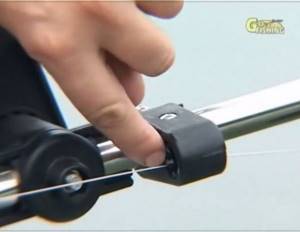
Rice. 45-4
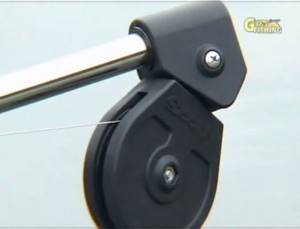
Rice. 45-5 In addition, the downrigger must have a pair of ceramic bushings, one ceramic slip ring type bushing (Fig. 45-4), and a ceramic roller (Fig. 45-5). Why is this necessary? The fact is that the cable on which the downrigger weight is attached is iron, and the metal can cut through the iron roller very quickly, while the ceramic one will help for a long time. The downrigger has different weights. For now I will show the whole system.
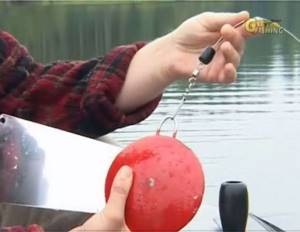
Rice. 45-6 Cable, crimp sleeves that clamp the cable, and there must be a rubber bumper. The rubber bumper will prevent the swivel from flying into the ceramic roller and breaking it. The ceramic roller is susceptible to impacts, and if we lift the downrigger load soon, the huge swivel may hit the roller and break the roller. To prevent this from happening, it is imperative to use a rubber bumper. Then comes the weight and the heavy-duty downrigger clasp.
Downrigger for trolling fishing
How to make a winch
For a downrigger, a special winch is used with a meter counter for the depth of the cable being lowered. But many DIYers use an electric car winch or invent something of their own. If you do not have the opportunity to purchase a winch with a drive, then you can make a winch with a mechanical drive, which will not affect your catch at all.
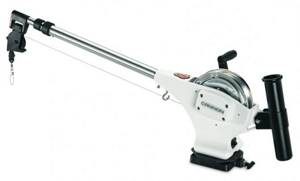
In order to make a winch with your own hands, you will need to take into account several factors; this will depend on how powerful the winch you need. If you plan to catch fish at shallow depths, then you don’t need a too steep and powerful winch.
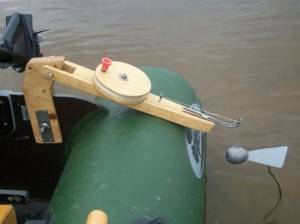
You also need to think about the issue of attaching the winch to the entire structure. Watch the video on how to properly and securely attach a winch. Because if everything is not done well, you risk simply losing your winch while fishing, and believe me, pulling it out from the depths will not be very easy. Therefore, as the popular saying goes, measure seven times, then cut.
How to significantly increase your fish catch using a downrigger?
A downrigger is created by fishermen primarily to increase the number of catches. Is it possible to do this? Of course! Using this simple device, you can increase the amount of catch several times, as it has several features:
- If you lower the sinker to greater depths, which can certainly be done with a device such as a downrigger, you have a chance to catch large, predatory fish, such as pike. You can use light, almost weightless bait;
- When using a special clamp, the device will “stand” stably at depth, without vibration. This will not scare away the fish, and it will swallow the prey;
- If there is a need to further increase the amount of catch, it is recommended to use special baits in the form of small fish. Large prey actively peck at similar individuals.
bolshoyulov.ru
How to assemble a downrigger at home
In order to correctly and efficiently assemble a downrigger with your own hands, follow the following instructions.

Assemble all the parts and check their workmanship.
Collect everything sequentially and slowly. Check the drawings. Check the attachment of the downrigger to the side of the boat. There should be no backlash or wobble. He must sit tight.
Downrigger operation diagram
A classic downrigger consists of:
- coils.
- cargo
- attachment systems to the side of the boat.
- rod holder.
- clips.
Modern models of downriggers can be additionally equipped with a cord release counter, an electric drive, a rotating mechanism and other important devices.
When manufacturing such a mechanism, many factors must be taken into account:
- The type of watercraft and method of attachment that the device must have.
- Fishing location and features of the reservoir (depth horizons, bottom topography, etc.).
- Weight of the loads used.
- What kind of fish do you plan to catch?
The operation of a downrigger is vaguely reminiscent of ring fishing. Only in the latter case is this done using bottom gear, and in the first case - using trolling. A downrigger is a kind of winch, with a remote arrow and a holder for a fishing rod or several (usually it is recommended to install no more than two spinning rods on one downrigger).
The main gear is attached to the downrigger cable using a special clothespin (clip). Thanks to this, the tackle with a spinner or wobbler, with the help of a weight attached to the cable, is lowered to the required depth, which can be determined by the counter of the reeled cord.
When biting, the fishing line (cord) is pulled out of the latch, which is attached to the cable. At the same time, the fish, pulling the main fishing line with bait, swallows the tee. At this time, the load on the fishing tackle decreases sharply due to the release of the load and the rod hooks the fish trying to straighten up.
The fisherman can only raise the fish to the surface and fish it out.
Operating principle
1. The fishing line is attached using a trigger mechanism or a special clamp to a weighted cable. Next, the user determines the length between the load and the bait.
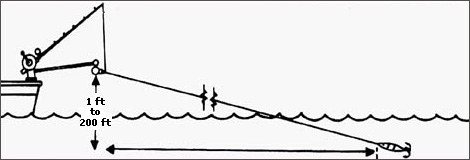
2. The reel is switched to free-winding mode. The bait, along with the load, is carefully immersed in the water (it is better to do this while the boat is moving to avoid winding up the fishing line) to the desired depth. The excess line is wound back onto the reel until the rod tip drops down.
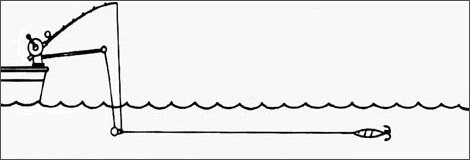
3. When a fish is caught, the trigger mechanism is activated, and the fishing line is separated from the cable with the load.
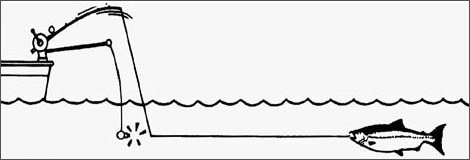
4. The cable with the load returns to the winch, which facilitates unhindered pulling out of fish.


